 CommonLit 360
Insights
How Blount County School District Drastically Improved Outcomes for All Students with CommonLit 360
CommonLit 360
Insights
How Blount County School District Drastically Improved Outcomes for All Students with CommonLit 360
Explore research that demonstrates how a partnership with CommonLit can positively impact students and teachers
CommonLit is dedicated to helping schools and districts use our highly affordable, comprehensive, and easy-to-implement literacy program that drastically accelerates student outcomes.
Blount County School District, located in eastern Tennessee, is one example of a school district that completely transformed outcomes for students. Just a few years ago, the district was struggling in ELA. Students were consistently making below average to average growth in ELA on their statewide assessment. As Jake Jones, the district’s current Assistant Director of Curriculum & Instruction recently explained, “(the district) didn’t really have a consistent curriculum that was being implemented.”
However, by 2020, outcomes for students at the district’s two comprehensive high schools changed drastically. By then, they had fully implemented CommonLit’s 360 curriculum and were utilizing CommonLit’s benchmark assessments to measure student reading growth throughout the school year.

In this blog post, we will summarize the key findings from Blount County's CommonLit 360 implementation.
Administrators Noticed Major Shift for Both Students and Teachers
The district’s secondary literacy coach, Terri Bradshaw, identified several key shifts after CommonLit 360 was adopted. First, she saw greater consistency across classrooms. According to Bradshaw, the curriculum “reduced variability for students.” Across classrooms, teachers were using the same effective instructional strategies and resources. This helped the district ensure equity for all its students.
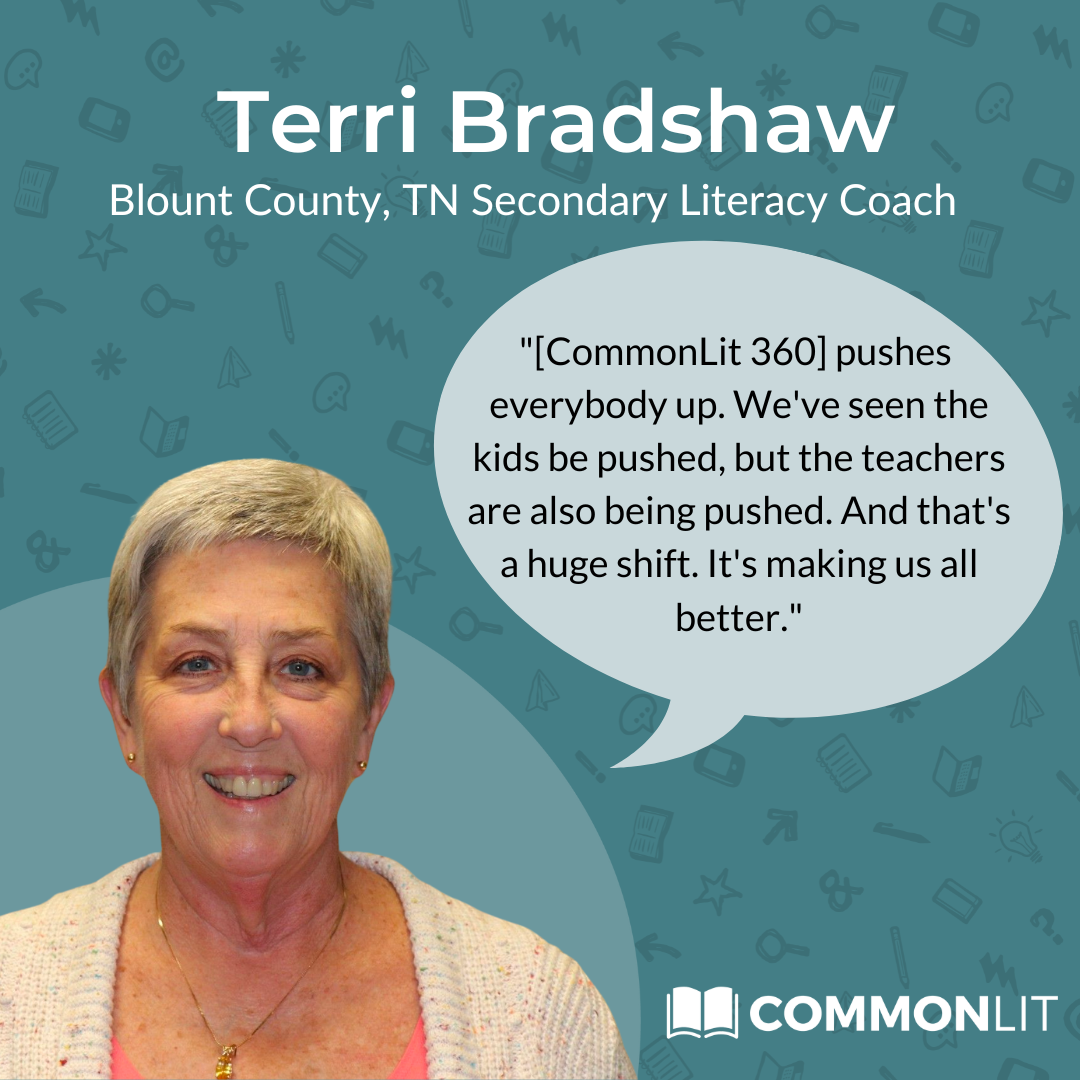
Second, the team saw vast increases in rigor and students owning more of their learning. Prior to the implementation of CommonLit 360, Bradshaw explained that teachers often relied on “passive instructional strategies - lecture, silent reading, or silently listening to texts.” After 360 was implemented, there was a drastic shift - Bradshaw noticed that “students are doing most of the work, are engaged with one another around a text” and that “the level of questioning has raised up … and that the kinds of things the kids are thinking about really are getting to the depth of the standard.”
When Bradshaw started working at Blount, she says “we had nothing; we were all over the place. Teachers had the freedom to do whatever they wanted. Shifts in the standards already occurred, but the shifts in instruction hadn’t taken place in our classrooms.” With CommonLit, teachers and administrators noticed tighter alignment to ELA standards, allowing students to develop key reading comprehension skills.
Finally, the team saw far greater student engagement and excitement in classrooms. CommonLit’s 360 units are each built around a high-interest essential question and theme. Texts in the unit are carefully selected because they explore the theme in compelling ways from a variety of perspectives. As Bradshaw noted, “everything is connected together” in the 360 units and students are “really engaged by the topics.”

While these are some of the major qualitative shifts that administrators observed in classrooms, the rest of this blog post will highlight the enormous performance gains the district has made since adopting CommonLit 360.
Key Finding #1: Student reading growth in Blount County went from below to above state average with the use of CommonLit.
Before using CommonLit, student growth ranged from well-below average to average growth. By the 2020-2021 school year, all schools in Blount County scored well-above average growth – the highest score possible. That means that students went from scoring in the lowest levels to the highest level of growth once they started using CommonLit!
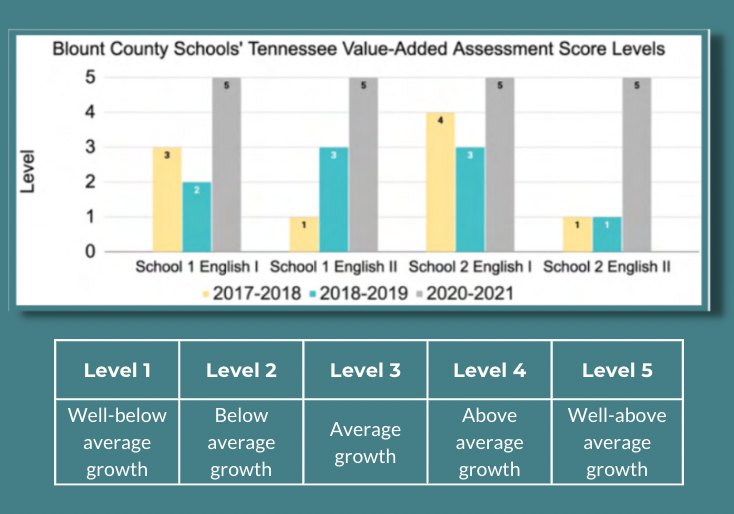
Key Finding #2: More students scored at On Track or Mastery levels, meaning less students scored Below grade level.
For both English I and English II, fewer students scored Below grade level as use of CommonLit 360 increased. From 2019-2021, Tennessee as a whole saw an increase in 9th graders scoring Below grade level. Blount County, on the other hand, decreased this number by 3.7%!
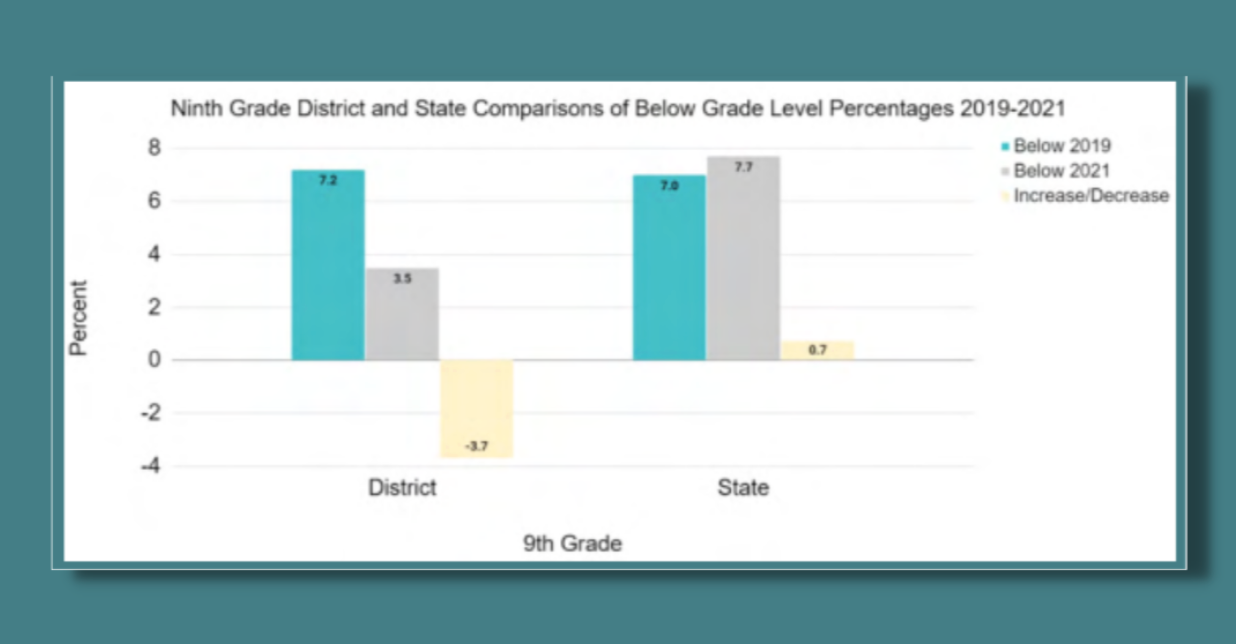
As students moved out of the Below category, they moved to On Track and Mastery.
Teachers quickly noticed the difference in student output. High school English teacher Jennifer Bayola explained the quality of her students’ conversations increased significantly, stating: “I would walk around and hear from my hyper-focused students. It wasn't conversations about what happened with my best friend yesterday, it was conversations around this text, and it was high quality conversations…where I could say ‘Yes! You’ve got it! Keep thinking like that.’”
Key Finding #3: Historically underserved student populations saw increased growth.
Students with disabilities, economically disadvantaged students, and students who identify as English Language Learners, Black, Hispanic, and Native American are part of the historically underserved student population. Bradshaw explained that Blount County has “some schools that have about 75-80% of students who are eligible for free and reduced lunch.”
The percentage of students scoring Below grade level in this group significantly decreased over the years as CommonLit was implemented. An average of 35.75% students from this subgroup scored Below grade level for the 2016-2017 school year. By 2020-2021, this percentage dropped to an average of just 13.75%.
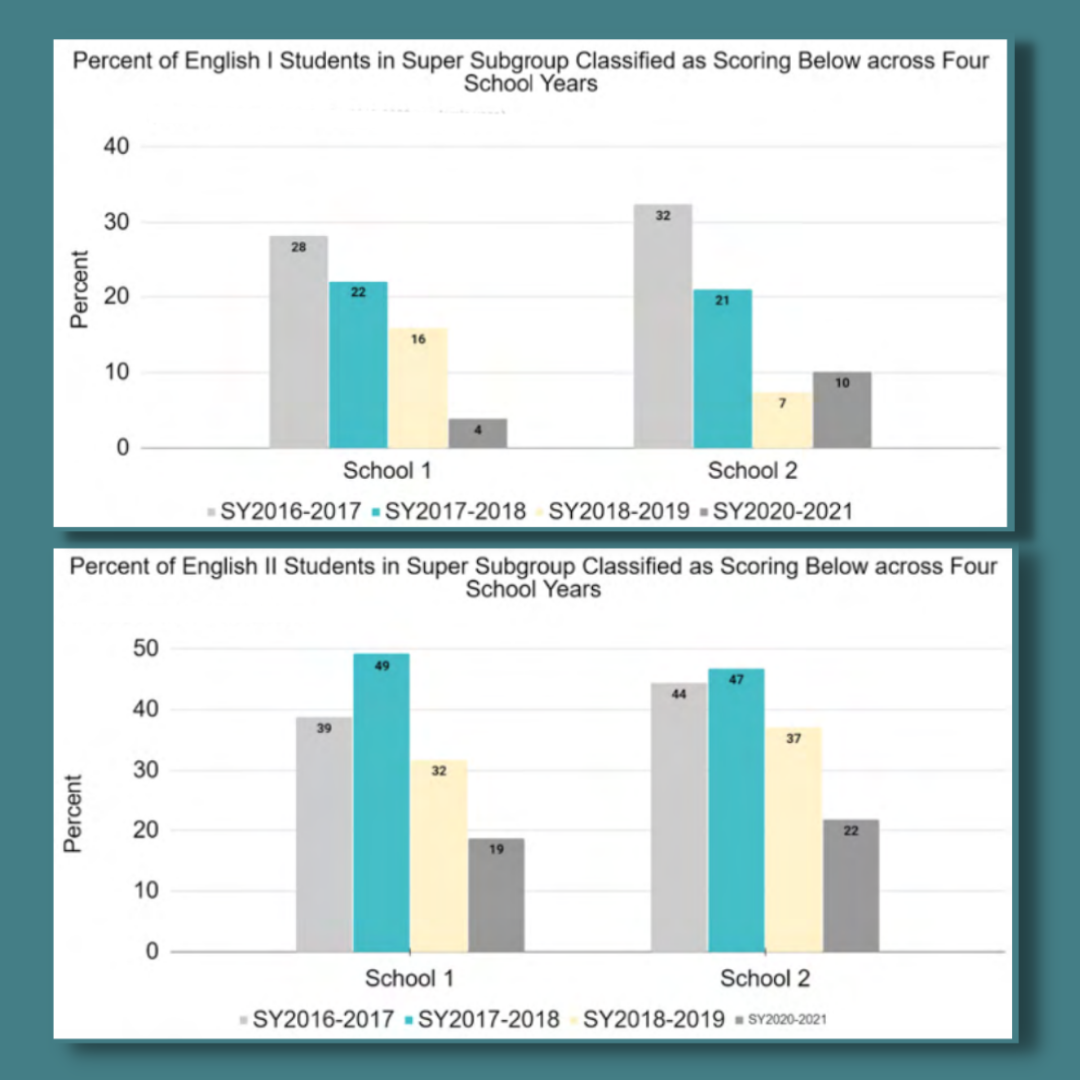
Conclusion
The positive impact of CommonLit 360 in Blount County is clear. As teachers began adopting our curriculum, student performance increased significantly across multiple grades.
Teachers also grew professionally during the partnership and felt that there was more time for collaboration, planning, and instruction. Bradshaw explained that CommonLit 360 “pushes everybody up. We’ve seen the kids be pushed, but the teachers are also being pushed. And that’s a huge shift. It’s making us all better.”

Next Steps
Want to learn more? Read the full report here.
If you’re excited about CommonLit 360 and seeing these results in your school or district, we recommend purchasing our highly-affordable School Essentials PRO Plus Package.
This package will give your school access to everything that helped our partner schools achieve these incredible gains, including:
- Benchmark assessments and unit skills assessments
- Ongoing, customized professional development
- Administrator data dashboards
- LMS integrations, including Canvas, Clever, and ClassLink
- A designated account manager and priority customer support
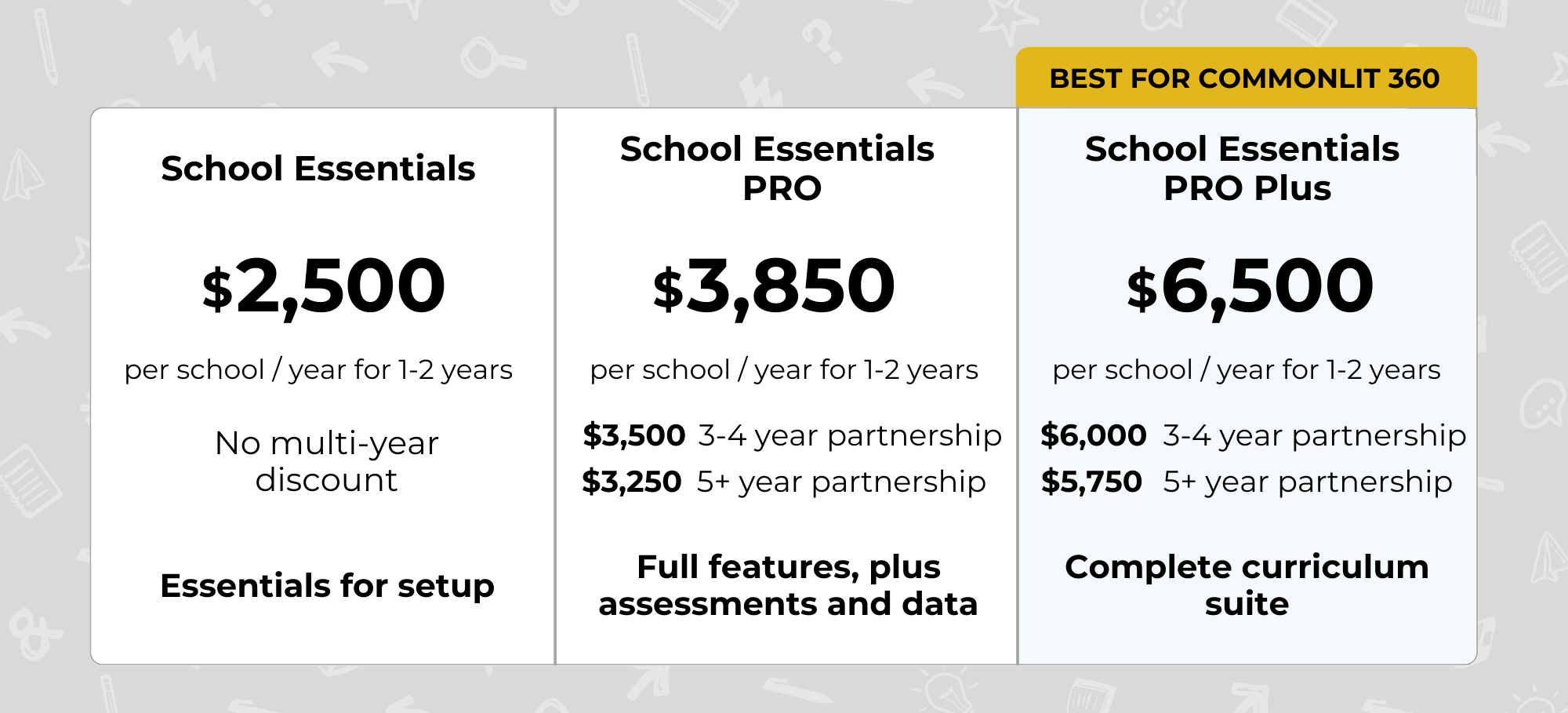
If you would like to talk with a CommonLit 360 specialist about our paid packages, schedule a quick call. We are eager to support your team!

